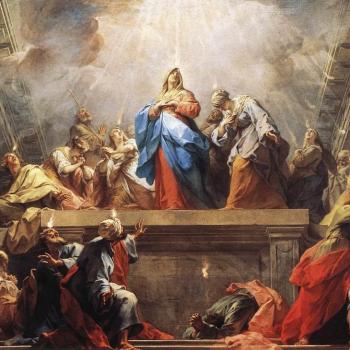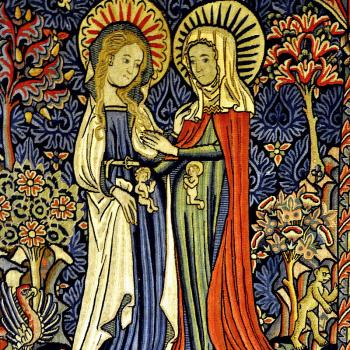Recently, the Wall Street Journal ran a piece on China’s new leader Xi Jinping’s efforts to shore up party loyalty by having government officials watch a new film about the collapse of the Soviet Union. Produced by a retired Chinese major general, the six-part documentary points a finger at Mikhail Gorbachev, not the communist system itself, as the source of the USSR’s crack-up. Those required to see the film are expected “to correctly understand the lessons of history,” according to one party boss in China’s Jiangsu province.
The interest of political power in historical interpretation is nothing new, but it’s been driven home to me afresh in reflecting on the fate of Martin Luther in the former German Democratic Republic (GDR)–what we used to call “East Germany.” From the time of the 400th anniversary of Luther’s death in 1946 to the 500th anniversary of his birth in 1983, Luther’s image in the GDR underwent a remarkable metamorphosis.
After the war, Marxist-oriented scholars, like their counterparts in the West, tended to discern deep pathologies in the German past. A central plank in anti-Fascist ideology, as it took shape in the East, were the twin evils of militaristic “Prussianism” and a German proclivity toward political docility that could be traced all the way back to Luther. The true hero of the Reformation was not Luther, but Thomas Müntzer, the fiery, apocalyptic leader of the Peasants’ Revolt of 1524/25. This interpretive framework was not novel; it went back to Friedrich Engels, who, after the failed revolutions of 1848, published The Peasant War in Germany (1850), a book which exerted great influence on East-German historical scholarship. Engels’s view also became party orthodoxy, presented in public documents and taught in school history curricula. More than a few streets in the GDR were renamed “Thomas Müntzer strasse.”
But the interpretation presented problems, and by the eve of the 450th anniversary of the Reformation in 1967, a rehabilitation of Luther was underway. A key problem was that it failed to garner the support of Protestant churches, which continued to admire Luther. What is more, in the GDR’s efforts to solidify a specifically East-German, socialist national identity (an acute political concern after the Berlin Wall went up in 1961), a figure as immense as Luther in German history could not simply be shoved aside. “Whoever affirms one [Luther or Müntzer] need not damn the other,” as the scholar Gerhard Brendler summarized a new orthodoxy in 1967. In challenging both Pope and Emperor, Luther, too, could be counted a progressive (and, therefore, a quasi-proto-socialist) force in the distant past.
And yet—and yet. Although the 1967 anniversary ended the sharp divide between Luther and Müntzer, they were rarely discussed apart from one another. The main justification for rehabilitating Luther, in fact, was that he had paved the way for Müntzer and with him a more pleasingly pungent strain of historical radicalism. A more forthright celebration of Luther himself had to await the quincentenary of the reformer’s birth in 1983.
In that year, at a time of escalating Cold War tensions and sagging popular support for GDR leadership, no less a figure than Party Chairman Erich Honecker chaired the100-member “Martin Luther Committee of the GDR” to make preparations for 1983 as a special year of “honoring Martin Luther.” Honecker hailed Luther as “one of the greatest sons of the German people” and made clear that the GDR planned to recognize “the historical achievement” of Luther which “contributed to social progress and world culture.”
The irony in all this was that just as the GDR decided that it was in its own interest to praise Luther, religious discontents and political dissidents were more prone to identify their own cause with Luther’s and the Party’s with a corrupt, late medieval church. An artist captured the mood of many in 1983 when he painted two “Joker cards” with the images of Luther and Marx on each. The inscriptions under them, in a gently mocking tone, read: “Marx’s teaching and Luther’s word will last forever” and “grin and bear it; the end is never certain.”
But the end, at least for Marx, came, swiftly and peacefully, in November of 1989 when the Wall fell.
And this brings us back to China and the “lessons of history” that the Communist party there now wants to teach. The experience of the GDR, of course, is no predictor of what will happen in China; a gulf of culture and circumstances separate the two Communist experiments. What is more, in the case of the GDR, the Party kept revising its view of Luther, whereas in China today, there seems but one acceptable interpretation of the collapse of the USSR: Gorbachev messed things up.
But perhaps at least this much is clear: once leaders in high places take a keen interest in monitoring and managing the past, preordaining its heroes and villains, those who have eyes to see and ears to hear might be justified in wondering if all is well in the ship of state, whether they keep grinning and bearing it, or not.












